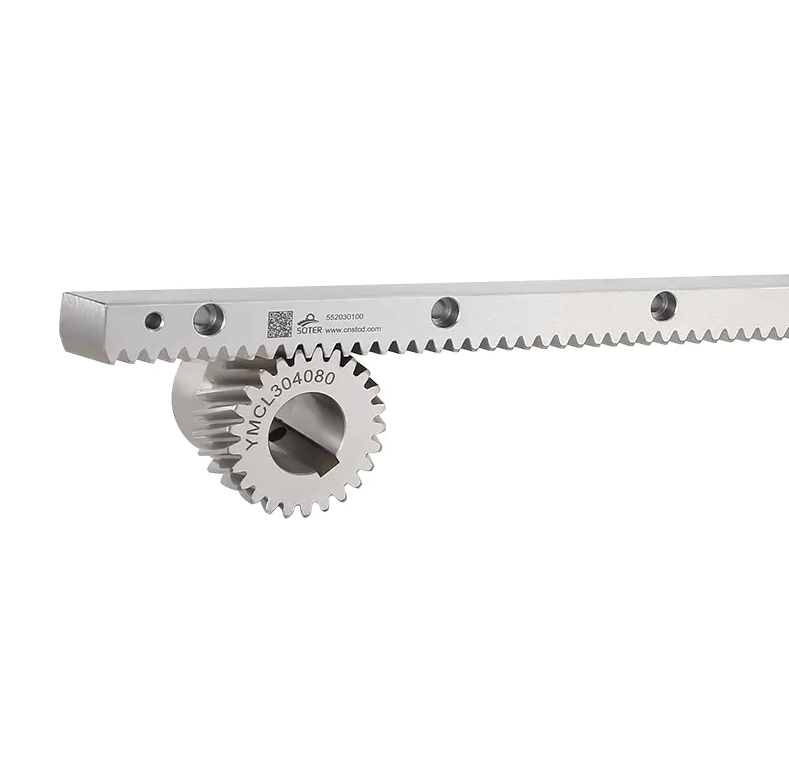Key Methods for Enhancing the Durability of Straight Gear Rack During Gear Meshing

Reducing wear between a Straight Gear Rack and its mating gear is essential to ensure the longevity and reliable performance of mechanical systems that rely on precise linear motion. Wear occurs primarily due to friction and repeated contact stresses during the meshing process, which can degrade the teeth profiles and ultimately lead to failure. Addressing this issue requires a combination of material selection, lubrication, surface treatment, precise manufacturing, and proper alignment to minimize the factors that contribute to wear.
Material selection is the foundation for wear resistance. Using high-quality steels with suitable hardness and toughness helps the Straight Gear Rack withstand repeated contact stresses without surface damage. Commonly, racks are made from alloy steels that can be heat-treated through carburizing, nitriding, or induction hardening. These treatments enhance the surface hardness, creating a wear-resistant layer while maintaining a tough core to absorb shocks. This balance reduces the likelihood of pitting, scoring, or tooth deformation during gear engagement.
Lubrication plays a critical role in minimizing friction and wear between the Straight Gear Rack and its mating gear. A proper lubricant forms a protective film that reduces direct metal-to-metal contact, dissipates heat, and carries away debris. Selecting the correct type of lubricant—whether grease or oil—depends on operating conditions such as load, speed, temperature, and environment. Regular maintenance to ensure the lubricant remains clean and sufficient is necessary to sustain its protective function and avoid accelerated wear.
Surface finish and treatment also influence wear resistance. Smoother tooth surfaces reduce friction and stress concentrations during meshing, which lowers wear rates. In addition to hardening processes, advanced surface coatings such as DLC (diamond-like carbon) or other thin-film coatings can be applied to further enhance wear resistance and reduce friction. These coatings can significantly extend the service life of the Straight Gear Rack under harsh operating conditions.
Precise manufacturing and machining accuracy are vital to ensure proper tooth geometry and alignment. Even slight deviations in tooth profile or pitch can cause uneven load distribution during engagement, leading to localized wear and premature failure. Maintaining tight tolerances during production guarantees smooth contact between the rack and pinion, reducing vibration, noise, and wear.
Proper alignment and installation are equally important in reducing wear. Misalignment between the Straight Gear Rack and the mating gear results in uneven tooth contact and increased stress on specific areas, accelerating surface degradation. Using rigid mounting structures and appropriate supports helps maintain alignment during operation. Additionally, periodic inspections can detect early signs of misalignment or wear, allowing for timely adjustments or repairs.
In summary, reducing wear between a Straight Gear Rack and its gear partner requires a comprehensive approach encompassing material quality, lubrication, surface treatment, manufacturing precision, and alignment control. By addressing these factors, the performance and durability of the gear system can be optimized, ensuring efficient and reliable operation over an extended service life.
Straight Gear Rack Technical Requirements
Quality Grade: DIN 6
Material: S45C/42CrMo
Tooth profile: straight teeth
Hardness treatment: high frequency quenching HRC48-52/ HRC50-55°
Production process: Ground on all sides after hardening
- Art
- Causes
- Crafts
- Dance
- Drinks
- Film
- Fitness
- Food
- Jogos
- Gardening
- Health
- Início
- Literature
- Music
- Networking
- Outro
- Party
- Religion
- Shopping
- Sports
- Theater
- Wellness


